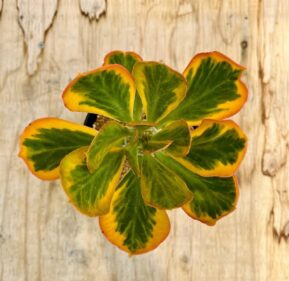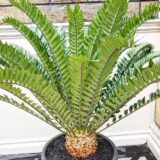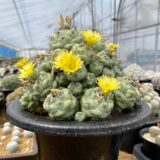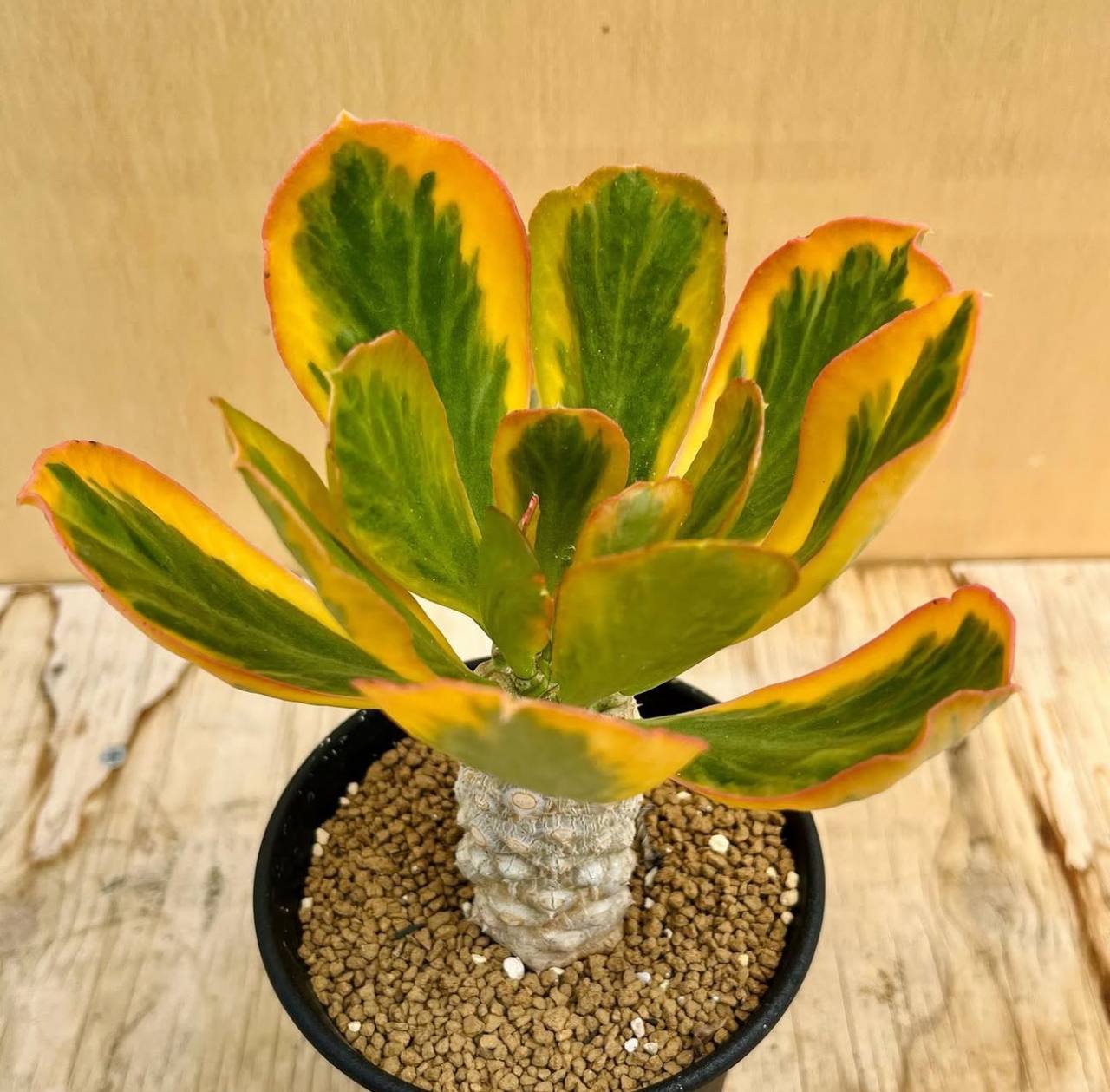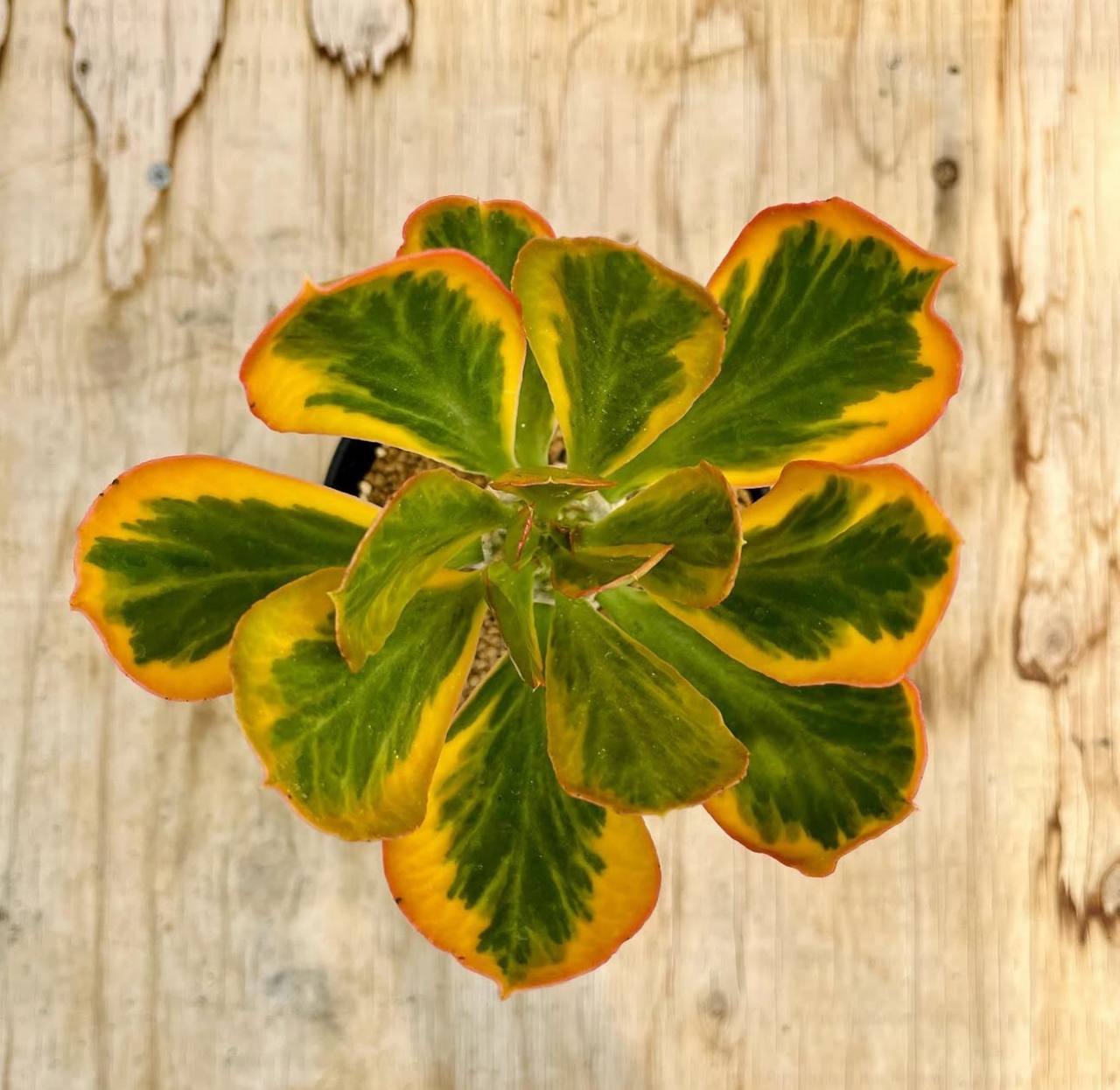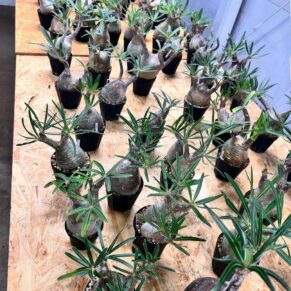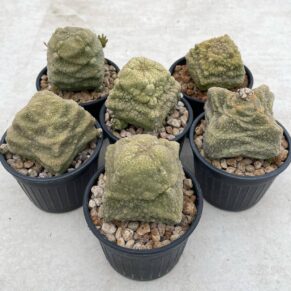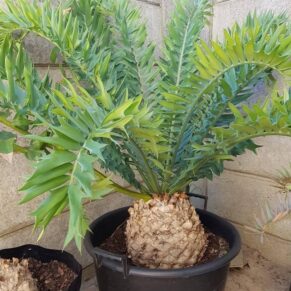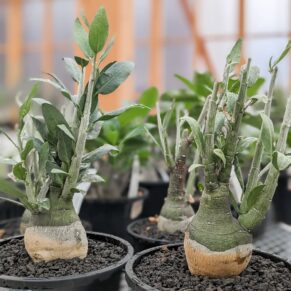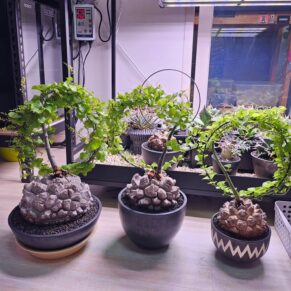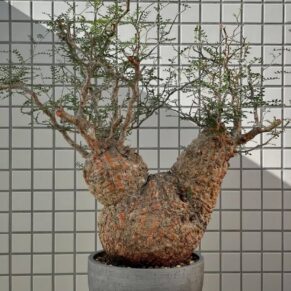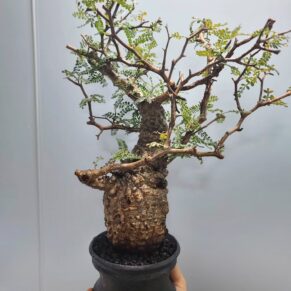Total $100.00
Shop
Euphorbia poissonii f.variegata
$87.00
Buy rare Euphorbia poissonii f. variegata at CaudExplants.com stunning variegated spurge with expert care, ethical sourcing, and premium cuttings.
Availability:12 in stock
Add to cart
Buy Now
1 Introduction & Brand Story
Welcome to CaudExplants.com—your source for ethically curated, top-quality Euphorbia poissonii f. variegata. This rare succulently sculptural species features fleshy cylindrical stems flecked in striking variegation of creamy yellows and greens. Whether you’re seeking cuttings or seeds, our offerings and expert guidance provide the best launchpad for collectors eager to grow this botanical gem. facebook group
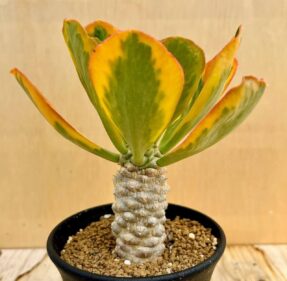
2. Botanical Identity & Native Habita Euphorbia poissonii f. variegata
Euphorbia poissonii f. variegata is a striking cultivar of Euphorbia poissonii, native to rocky, arid environments around 400–700 m elevation in West Africa—especially in Nigeria and surrounding regions ([turn0search2]turn0search12). It thrives in well-drained, rocky soils and open dry woodland.Shop here CaudExplants.com
In its wild form, the species typically forms branching, cylindrical stems (3–4 cm diameter), occasionally with rudimentary spines, topped by seasonal pale green leaves. As a variegated form, variegata displays brilliant yellow or cream streaks where chlorophyll is absent, making each specimen uniquely patterned—and highly coveted by collectors ([turn0search6]turn0search3). Though capable of reaching up to 2 m tall in nature, cultivated specimens typically remain compact (30–60 cm) when grown in containers ([turn0search3]turn0search0).instagram
Flowering occurs in late dry season or spring, producing small yellow-green cyathia—often with red stamens—though blooms are rare in indoor cultivation. Seed pods, if produced, can eject seeds explosively and should be handled cautiously ([turn0search2]turn0search10) CaudExplants.com
3. Collector Appeal & Variegation Value
-
Unique coloration: The variegated pattern renders each plant visually striking and unmatched in aesthetic appeal, elevating its collectible value ([turn0search6]turn0search3).
-
Decorative structure: With its cylindrical, waxy stems and subtle foliage, this spurge provides strong architectural impact in minimalist interiors or caudiciform gardens ([turn0search8]turn0search0).
-
Ethical acquisition: All stock from CaudExplants is sustainably sourced, propagated, and CITES-compliant—ensuring legality and conservation-conscious cultivation CaudExplants.com
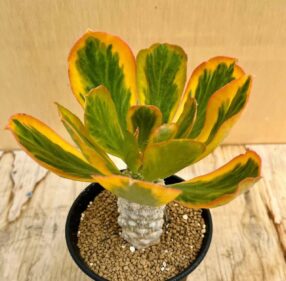
Euphorbia poissonii f.variegata
4. Essential Environment & Growing Condition :Euphorbia poissonii f. variegata
Light
Prefers bright sunlight—ideally full sun or bright indirect light. In hotter climates, provide occasional shade to prevent sunburn. Consistent light ensures vibrant variegation and compact growth ([turn0search8]turn0search0).
Soil Mix
Use a well-draining, mineral-rich substrate (e.g. cactus mix with perlite, pumice, or gravel). Avoid heavy or moisture-retaining soils; speed of drainage is critical ([turn0search4]turn0search0) CaudExplants.com
Temperature & Zone
Grows best between 22–28 °C in warm seasons; can tolerate up to 35 °C briefly if shaded. Avoid frost: protect or bring indoors when temps drop below ~8 °C (Zone 10a–11b) ([turn0search8]turn0search6) CaudExplants.com
5. Propagation Guide: Cuttings & Seeds :Euphorbia poissonii f. variegata
5.1 Cuttings / Stem Propagation
-
Select healthy stem segments or offsets; let them callus for 7–14 days before planting in dry, gritty soil ([turn0search2]turn0reddit13).
-
Optional: dust with rooting hormone or cinnamon for anti-fungal protection. Plant cut above the lower swelling or ridge—about 5 cm deep.
-
Place in bright light and mist lightly once a week; do not overwater—rooting can take several weeks ([turn0reddit13]turn0reddit14).
-
Never allow cut ends to remain damp during callusing—this risks rot
5.2 Seeds
-
Rarely used commercially due to slow growth; variegated forms may not breed true by seed ([turn0search0]turn0search3).
-
If available, sow on well-drained medium, lightly surface-cover seeds and maintain moderate warmth (22–26 °C). Provide bright indirect light and minimal moisture; germination may take 1–3 weeks CaudExplants.com
6. Care & Maintenance
Watering
Follow a classic soak-and-dry method: water deeply, then let soil dry fully before re-watering. In spring/summer, water every 7–14 days; reduce frequency drastically in dormancy periods—especially below 15 °C, avoid watering for weeks at a time ([turn0search6]turn0search8).
Feeding
Apply a diluted succulent or cactus fertilizer sparingly during active growth (spring–early summer). Avoid fresh organic or nitrogen-rich feeds to preserve color intensity and prevent soft tissue issues ([turn0search8]turn0search0).facebook
Pruning & Maintenance
Prune in early spring to maintain shape and encourage growth. Always wear gloves and protective eyewear due to toxic sap. Remove discolored or dense stems to improve airflow ([turn0search9]turn0search0).
7. Toxicity & Safety
All parts exude a milky latex sap that’s extremely irritant and toxic if ingested. Symptoms include skin burns, eye injuries, and gastrointestinal upset. Always wear gloves and wash tools and hands thoroughly after handling ([turn0search12]turn0search10). Keep away from children and pets.
8. Common Challenges & FAQs
| Issue | Cause | Solution |
|---|---|---|
| Cuttings rot or fail | Planted before full callus, overwatering | Wait 1–2 weeks for wound healing; use dry potting mix, minimal watering |
| Variegation fading | Inadequate sunlight or low light | Increase bright light exposure, avoid deep shade |
| Leaf drop in winter | Dormancy and cooler temps | Cut watering; maintain temperatures above 8 °C |
| Poor growth | Low light, over-watering, wrong soil | Improve drainage, move to brighter position, adopt soak‑dry cycle |
| Sap contact issues | Handling without protection | Always use gloves, goggles, and protective clothing |
9. Growth Timeline & Display Tip
Euphorbia poissonii f. variegata
Propagation from cuttings can take months to root, and plants may take years to reach ornamental size. Container-grown specimens typically stay compact (30–60 cm tall), making them ideal for tabletop or patio displays. Elevate pots occasionally to highlight variegation and structure. Avoid exposing cut caudex or base—keep buried for best growth CaudExplants.com
